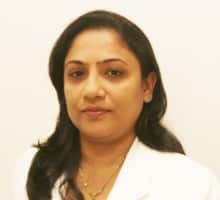Request Appointment
Enter your details and we will be in touch with you shortly;
Or call
8655885566
between 8 am and 8 pm.

Narrowing of the cervical spinal canal

Cervical spinal canal stenosis is not as common as lumbar (lower back) spinal stenosis but it can have more serious symptoms such as paralysis and weakness that affects the entire body. Other symptoms of cervical spinal canal stenosis may include:
 Professional diagnosis required
Professional diagnosis required Chronic, can last for years
Chronic, can last for years Treatable with 4 weeks of QI Spine Therapy
Treatable with 4 weeks of QI Spine TherapyAging is one of the main causes of cervical spinal canal stenosis as it causes changes in the shape and size of the spinal canal. Other common causes of cervical spinal canal stenosis include:
 Professional diagnosis required
Professional diagnosis required Chronic, can last for years
Chronic, can last for years Treatable with 4 weeks of QI Spine Therapy
Treatable with 4 weeks of QI Spine TherapyCervical spinal canal stenosis can be managed with non-invasive treatments and rarely requires surgery. Approximately 80% of all back pain is classified as “unspecific” causes. This leads to imprecise treatment that has little or no effect. However, an accurate diagnosis can offer lasting relief from cervical spinal canal stenosis pain.
QI uses Digital Spine Analysis (DSA), an advanced European technology that provides precise functional diagnosis. Unlike MRI and Xray tests that only identify bone and tissue damage, the DSA test can quantify muscle function and identify weakened muscles. Based on these findings, QI spine specialists recommend isolation and precision movements that target these muscles for quick and lasting relief from cervical spinal canal stenosis pain.
QI offers unique treatment protocols that are derived from an algorithm which is based on over 47,000 past cases. The protocols are customized according to the needs of each patient and ensures that every patient with lumbar spinal canal stenosis receives treatment that is best suited to his/her needs. This evidence-based treatment system offers higher objectivity and increases the success rate of each cervical spinal canal stenosis treatment plan. QI physiotherapy includes medical movements such as the McKenzie method and kinetic control movements to relieve the pressure on affected structures.
Inflammation is a common component of cervical canal stenosis and so NSAIDs (non-steroidal anti-inflammatory drugs) may be prescribed. These medications are effective in reducing lumbar spinal stenosis pain but they pose significant cardiovascular and gastrointestinal risks. However, QI utilizes Frequency Specific Microcurrent (FSM) technology to reduce cervical spinal canal stenosis pain without any side effects. The FSM method uses a low-level electric current to promote repair and eliminate back pain.
Cervical spinal canal stenosis can cause severe and debilitating pain if it is left untreated and so it is important to visit a spine specialist for an accurate diagnosis.
 Professional diagnosis required
Professional diagnosis required Chronic, can last for years
Chronic, can last for years Treatable with 4 weeks of QI Spine Therapy
Treatable with 4 weeks of QI Spine TherapyCervical spinal canal stenosis can be managed with non-invasive treatments and rarely requires surgery. Approximately 80% of all back pain is classified as “unspecific” causes. This leads to imprecise treatment that has little or no effect. However, an accurate diagnosis can offer lasting relief from cervical spinal canal stenosis pain.
QI uses Digital Spine Analysis (DSA), an advanced European technology that provides precise functional diagnosis. Unlike MRI and Xray tests that only identify bone and tissue damage, the DSA test can quantify muscle function and identify weakened muscles. Based on these findings, QI spine specialists recommend isolation and precision movements that target these muscles for quick and lasting relief from cervical spinal canal stenosis pain.
QI offers unique treatment protocols that are derived from an algorithm which is based on over 47,000 past cases. The protocols are customized according to the needs of each patient and ensures that every patient with lumbar spinal canal stenosis receives treatment that is best suited to his/her needs. This evidence-based treatment system offers higher objectivity and increases the success rate of each cervical spinal canal stenosis treatment plan. QI physiotherapy includes medical movements such as the McKenzie method and kinetic control movements to relieve the pressure on affected structures.
Inflammation is a common component of cervical canal stenosis and so NSAIDs (non-steroidal anti-inflammatory drugs) may be prescribed. These medications are effective in reducing lumbar spinal stenosis pain but they pose significant cardiovascular and gastrointestinal risks. However, QI utilizes Frequency Specific Microcurrent (FSM) technology to reduce cervical spinal canal stenosis pain without any side effects. The FSM method uses a low-level electric current to promote repair and eliminate back pain.
Cervical spinal canal stenosis can cause severe and debilitating pain if it is left untreated and so it is important to visit a spine specialist for an accurate diagnosis.
 Professional diagnosis required
Professional diagnosis required Chronic, can last for years
Chronic, can last for years Treatable with 4 weeks of QI Spine Therapy
Treatable with 4 weeks of QI Spine Therapy


Have a question?
Ask our spine specialists
Who is a QI Spine Specialist?
A QI Spine Specialist is a medical expert with

Dr. Nidhi Sanghvi Shah

Dr. Shital Gaikwad

Dr. Richa Bhatia
9000 hours
of specialisation in treating back and neck conditions
32 hours
of spine physiotherapy specialisation methods in McKenzie concepts, Kinetic control, Neurodynamic solutions, Mulligan’s concepts
500 hours
and 6 months of QI Spine specialisation courses